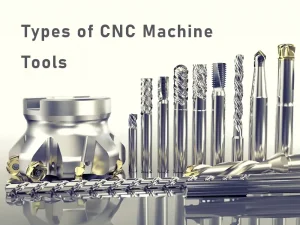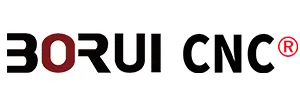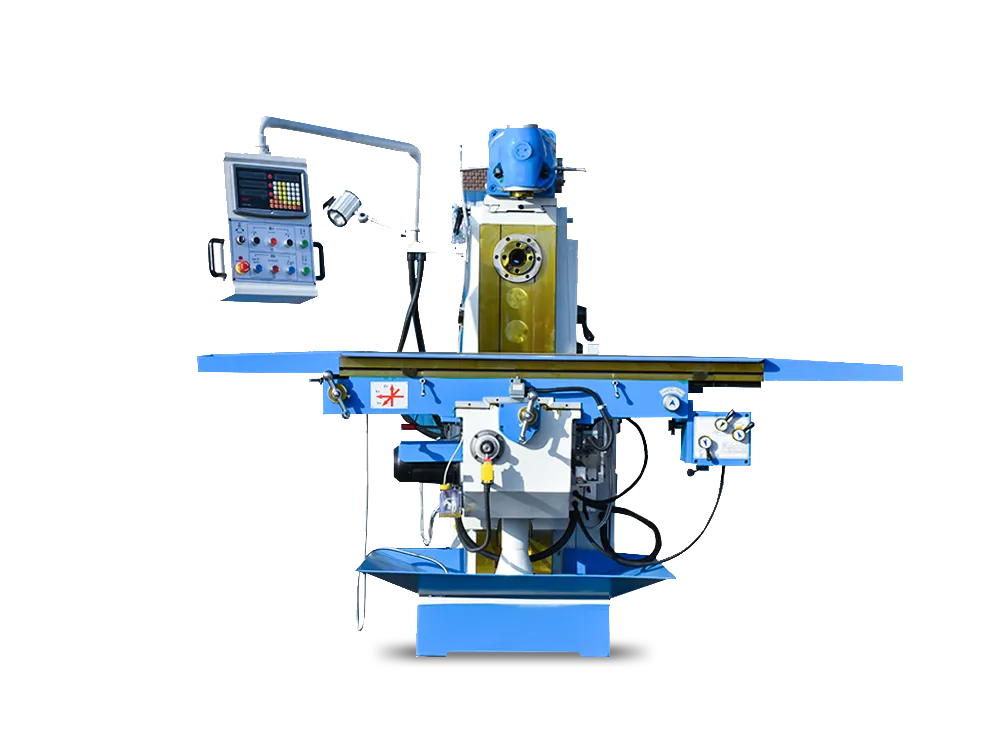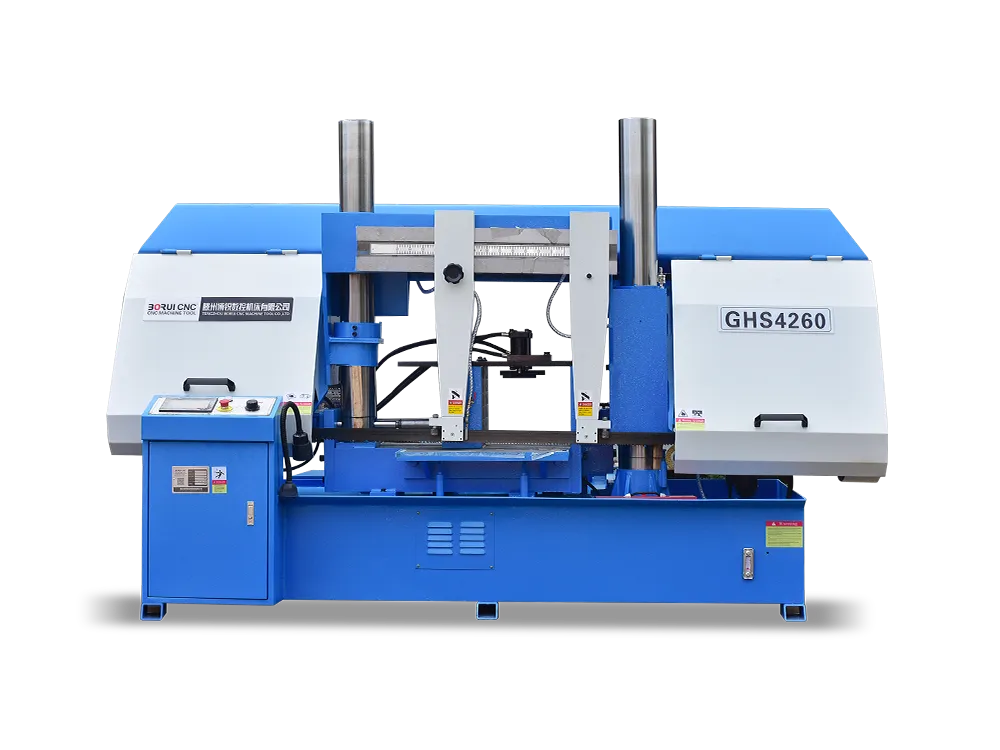
Technologie vervangt veel conventionele ideeën en machines. CNC machines zijn ook het resultaat van technologische revoluties. Deze machines onderscheiden zich in de productie-industrie door hun snelheid en precisie. Deze machines hebben verschillende componenten die leiden tot verschillende soorten CNC bewerkingsmachines.
Deze gereedschappen dragen bij aan de nauwkeurige werking van deze machines. Alle soorten gereedschap voeren specifieke taken uit. Daarom is het cruciaal om elk type te begrijpen om de vereiste resultaten te behalen. Ken je deze gereedschappen niet? Geen nood! In deze gids vind je informatie over deze gereedschappen, van klein tot groot. Dus laten we beginnen.
Overzicht van CNC-bewerkingsmachines
CNC machines werken met de instructie van een computer. Ze worden gebruikt om verschillende materialen te snijden, ontwerpen en vormen met 100% precisie. Ze bestaan uit een speciaal CNC (Computerized Numerical Control) systeem. Dit zorgt ervoor dat deze machines werken volgens de gecodeerde instructies van de operator.
Je hebt vast de buitengewone ontwerpen van meubels gezien. Dit is mogelijk dankzij deze geavanceerde machines. Maar deze machines werken niet alleen. In plaats daarvan zijn hun werking en functionaliteit afhankelijk van de gereedschappen. In eenvoudige woorden kunnen we zeggen dat deze machines handen hebben om bepaalde taken uit te voeren, die bekend staan als hun gereedschap.
Deze gereedschappen omvatten draai-, snij-, boor- en slijpgereedschappen. Al deze gereedschappen zijn bevestigd aan de structuur van de primaire machine. Hoe werken deze gereedschappen met CNC machines? De fabrikanten maken de ontwerpsjabloon via software. De computer kan dit ontwerp echter niet zien.
Dus verandert de operator dit ontwerp in geprogrammeerde instructies. Deze instructies worden aan de computer gegeven. De computer decodeert de berichten en stuurt deze snij- en vormgereedschappen. De snijgereedschappen van deze CNC machines volgen deze instructies. Dit maakt hun werk supernauwkeurig en precies.
De CNC machines kunnen alleen werken met deze gereedschappen. Bovendien storten deze machines in als het gereedschap de computergestuurde instructies niet volgt. Ze hebben verschillende gereedschappen die de functionaliteit van deze machines verbeteren. Met elk gereedschap kunnen de machines anders werken en unieke taken uitvoeren. In het onderstaande gedeelte bespreken we elk van deze verschillende gereedschappen.
CNC Draaigereedschap
Deze gereedschappen worden gebruikt in het CNC-draaiproces. Bij dit bewerkingsproces beweegt het werkstuk. De snijgereedschappen snijden en vormen dit draaiende werkstuk. Vergeet niet dat het geautomatiseerde systeem de rotatie van het werkstuk bestuurt. Ook de draaigereedschappen volgen de geautomatiseerde instructies.
Ze verwijderen het materiaal met precisie van het werkstuk. Deze CNC draaigereedschappen zijn gemaakt van massief materiaal. Ze zijn sterk genoeg om elk werkstuk te snijden en te vormen. Er zijn verschillende draaigereedschappen. Elk van hen varieert in termen van hun werk. Laten we er eens induiken en die verschillende CNC draaigereedschappen in detail bespreken.
1- Boorgereedschap
Boorgereedschap is handig om de diameter van een gat te vergroten. Stel dat je een gat in een werkstuk hebt geboord. Maar dat gat heeft dan een specifieke diameter. Als je een grotere diameter nodig hebt, moet je dit kottergereedschap gebruiken. Ze vergroten niet alleen het gat, maar zorgen er ook voor dat het gat goed gepolijst wordt. Ze zijn er in twee soorten: grof kottergereedschap en fijn kottergereedschap.
2- Afschuingereedschap
Zoals hun naam al doet vermoeden, maken afkantgereedschappen afschuiningen voor werkstukken. Deze gereedschappen snijden het werkstuk onder een hoek. Door deze hoek wordt het oppervlak van werkstukken zeer glad. Weet je niet wat afschuinen is? Het is een proces waarbij de scherpe randen van het werkstuk worden gladgemaakt. Het is een cruciale stap in het freesproces.
Waarom? Omdat de scherpe randen schade kunnen veroorzaken en het esthetische uiterlijk kunnen aantasten. Vergeet niet dat deze afkantgereedschappen er in verschillende maten zijn. De kleinere maten zijn geschikt voor routinegebruik. Grotere gereedschappen worden daarentegen op professioneel niveau gebruikt. Fabrikanten gebruiken ze om onderdelen te maken zodat de assemblage eenvoudig wordt.
3- Kartelgereedschap
Kartelgereedschap wordt gebruikt om verschillende soorten patronen te maken in de werkplaats. Deze gereedschappen hebben twee soorten patronen: diamant en recht. Wanneer het op het werkstuk wordt gedrukt, drukt het gereedschap het gewenste patroon uit deze twee patronen. Dit patroon verbetert de grijpkracht van het materiaal en de esthetiek. Vergeet niet dat deze gereedschappen zeer stijf en robuust zijn. Ze kunnen dus ontwerpen en gestructureerde oppervlakken van elk materiaal maken.
4- Scheidingshulpmiddelen
Scheidingsgereedschappen worden gebruikt om het ontworpen deel van het werkstuk los te maken. Ze bestaan uit scherpe messen die het deel van het werkstuk wegsnijden. De werking of het snijden van deze gereedschappen is nauwkeurig. Ze snijden het werkstuk van waar het computersysteem het instrueert. Er zijn verschillende soorten scheidingsgereedschappen, die elk op een andere manier werken. Deze gereedschappen kunnen met verschillende materialen werken, zoals glas, hout, metaal en stenen.
CNC snijgereedschappen
CNC snijgereedschappen zijn andere kritieke onderdelen in het CNC freesproces. In tegenstelling tot stemgereedschap blijft snijgereedschap niet stilstaan tijdens het frezen. Deze gereedschappen bewegen in een cirkelvormige beweging om het stilstaande werkstuk te snijden. De operator plaatst het werkstuk op de werktafel en klemt het goed vast. De stabiele positie maakt nauwkeurig snijden en vormen mogelijk.
De bruikbaarheid van deze gereedschappen is standaard in de luchtvaart- en auto-industrie. Fabrikanten gebruiken ze om verschillende complexe onderdelen van vliegtuigen te maken. Ze zijn voornamelijk gemaakt van hardmetaal en hogesnelheidsstaal. Deze materialen maken deze gereedschappen robuust genoeg om elk werkstuk te snijden. Laten we enkele CNC snijgereedschappen bespreken.
1- Eindfrezen
Eindfrezen zijn verantwoordelijk voor het maken van sleuven en holtes en het maken van contouren. Ze snijden en vormen het werkstuk in verschillende richtingen. Zo kunnen ze oppervlakken van verschillende vormen en dieptes maken. Je begrijpt misschien dat deze frezen lijken op de boorgereedschappen. Beide gereedschappen zijn echter verschillend.
De boorgereedschappen zijn bedoeld om gaten te maken. Ze worden in het werkstuk gedrukt. Aan de andere kant zijn deze frezen veelzijdiger. Ze snijden het materiaal in verschillende richtingen, horizontaal en verticaal. Ze kunnen dus verschillende gaten en sleuven maken. Ze zijn niet beperkt tot het maken van gaten. Hun snijgereedschap kan bochten maken in metaal, hout en andere materialen.
2- Platenmolens
Platenfrezen worden gebruikt wanneer er op grote schaal vlakke oppervlakken moeten worden gefreesd. Ze hebben een complex ontwerp met verschillende tanden om de taak uit te voeren. Deze tanden zijn ontworpen om snel het grootste deel van het metaal uit het werkstuk te verwijderen. Er zijn echter enkele beperkingen aan het gebruik van plaatfrezen. Ze zijn bijvoorbeeld minder veelzijdig omdat ze alleen horizontaal kunnen worden gebruikt. Bovendien zijn ze alleen geschikt voor vlakke oppervlakken.
3- Gezichtsmolens
Vlakfrezen zijn bandachtige gereedschappen met rondom gespecialiseerde frezen. Deze frezen zijn gemaakt van hardmetaal of snelstaal. Ze zijn erg scherp en snel en kunnen een groot werkstukoppervlak bestrijken. Wat ik leuk vind aan deze gereedschappen zijn de onafhankelijke frezen. Je kunt ze vervangen als ze niet goed werken, wat de levensduur van het gereedschap verlengt. Deze gereedschappen kunnen gemakkelijk groeven en andere complexe vormen maken.
4- Scharen
Heb je je ooit afgevraagd wat de unieke ontwerpen en vormen van robuuste metalen zijn? Hoe worden die sterke metalen gesneden? Achter deze metaalbewerking zit schaargereedschap. Deze gereedschappen bevatten vaste en verstelbare messen. De messen zijn scherp genoeg om grote stukken van verschillende metalen te knippen. De exacte uitlijning van de scharen is cruciaal om metaalafval te minimaliseren.
5- Holle Molens
Holle frezen zijn specifiek voor het frezen van ronde werkstukken. Je hebt vast wel eens bouten, schroeven en moeren gezien. Holle frezen vormen ze. Bovendien zijn ze ook geschikt voor het maken van cilindrische vormen. Wat ik leuk vind aan deze gereedschappen is dat ze materiaal van de binnenkant van het werkstuk kunnen verwijderen. Daardoor kunnen ze een uitstekende precisie bereiken. Het ontwerp van deze gereedschappen is eenvoudig. Het bevat scherpe randen om de omtrek van het ronde metalen stuk te snijden.
Boorgereedschap
Je weet dat boren betekent gaten maken. Zoals hun naam al doet vermoeden, hebben CNC boorgereedschappen verschillende boren. Deze bits worden gebruikt om gaten in het werkstuk te maken. Ze kunnen gaten maken in hout, plastic en verschillende metalen. Hun traditionele ontwerpen worden gebruikt om gaten één voor één te maken. Dit was dus een tijdrovend en minder efficiënt proces.
Nu zijn de dingen veranderd door de technologische vooruitgang. Ze hebben geavanceerde ontwerpen waarmee ze veel gaten tegelijk kunnen maken. Al deze gaten worden nauwkeurig gemaakt omdat een computer het gereedschap leidt. Hieronder staan verschillende soorten boorgereedschap.
1- Centerboren
Het eenvoudigste type boorgereedschap is de centreerboor. Deze wordt gebruikt om een klein kegelvormig gat te maken. Fabrikanten gebruiken deze kleine gaatjes als gids om grote gaten te maken met belangrijkere boren. Op deze manier verhogen deze gereedschappen het precisieniveau bij het boren. Het zal niet verkeerd zijn dat ze het vooral gebruiken om een markering te maken voor uitgebreid boren.
2- Uitwerpboren
In tegenstelling tot centerboren maken uitwerpboren diepe gaten. Soms worden uitwerpboren verwerkt met centerboren. Als er bijvoorbeeld gaten worden gemarkeerd met centerboren, maken uitwerpboren ze diep. Bovendien zijn uitwerpboren uitgerust met een zelfreinigend systeem om de resten te reinigen. Dit blijkt zeer nuttig te zijn om het gat gladder te maken.
3- Twistboren
Twistboren zijn kleine staafvormige boorgereedschappen omgeven door kleine spiraalvormige groeven. De snijkant bevindt zich echter aan het uiteinde van de staaf. De groeven zorgen voor de geleiding van de snijkant bij het boren van het gat. Door hun eenvoudige ontwerp zijn ze populair in kleine industrieën en werkplaatsen. Ze raken echter oververhit door wrijving als gevolg van het gebruik bij het boren van stijve materialen. Hiervoor zijn specifieke koelmiddelen nodig, wat de totale kosten kan verhogen.
Slijpgereedschap
Slijpgereedschap wordt gebruikt om het werkstuk een definitieve look te geven. Maar de vraag rijst: HOE? Deze gereedschappen hebben gespecialiseerde slijpschijven. Deze schijven glijden met snelheid en kracht over het werkstuk. Tijdens het glijden slijpen en vormen ze het werkstuk met precisie. Dit proces vermindert het extra ruwe oppervlak van het werkstuk.
Werkstukken kunnen alleen een verfijnd uiterlijk krijgen met deze gereedschappen. Bovendien bestaan er vele soorten slijpgereedschap die variëren in vorm en grootte van de schijven. Deze zijn allemaal specifiek voor verschillende soorten materialen. Slijpgereedschappen zijn nauwkeurig en kosteneffectief. Daarom beschouwen fabrikanten ze als nuttig voor het frezen op grote schaal.
Verschillende soorten materialen die worden gebruikt bij de productie van CNC-bewerkingsmachines
Er worden verschillende soorten materialen gebruikt om werktuigmachines te maken. Een grondstof van lage kwaliteit zal een gereedschap van lage kwaliteit vormen en omgekeerd. Streng materiaal zorgt ervoor dat gereedschappen kunnen werken met massieve werkstukken. Laten we enkele veelgebruikte materialen bespreken die gebruikt worden in CNC werktuigmachines.
1- Koolstofstaal
Koolstofstaal is beroemd voor het maken van gereedschappen voor het frezen van zachte materialen. Het is voornamelijk een legering van metalen met een lage sterkte. Gereedschappen van dit materiaal zijn dus geschikt voor zwaar freeswerk. Een ander probleem met dit materiaal is dat het niet bestand is tegen corrosie. Daarom worden er speciale coatings aangebracht om de structuur te behouden. Bovendien produceert het freesproces intensieve hitte.
Koolstofstaal is echter thermisch gevoelig vanwege het lage smeltpunt. Daarom zijn gereedschappen van koolstofstaal niet geschikt om op grote schaal te frezen. Een voordeel van dit materiaal is echter de kosteneffectiviteit. De grondstoffen zijn goed verkrijgbaar en dus goedkoop. Als je een krap budget hebt, kun je ze gebruiken voor kleine freesbewerkingen op kleine schaal.
2- Snelstaal
Hogesnelheidsstaal staat bekend om zijn duurzaamheid. Het is een mengsel van robuuste metalen zoals molybdeen, wolfraam en kobalt. Dit materiaal wordt high-speed genoemd vanwege de snelheid bij freesbewerkingen. Standaard gereedschappen van dit materiaal zijn snij- en boorgereedschappen. Gereedschappen van dit materiaal zijn hittebestendig. Bovendien hebben gereedschappen van HSS een lange levensduur door hun herslijpende eigenschappen.
3- Hardmetaal
Hardmetaal is een ander sterk materiaal dat wordt gebruikt voor CNC bewerkingsmachines. Het wordt gevormd door wolfraam en koolstof, die bepalend zijn voor de hardheid. Onthoud dat hardmetaal een superieure hittebestendigheid heeft. Dit betekent dat deze gereedschappen bestand zijn tegen de wrijvingswarmte tijdens het frezen. Daarom worden er verschillende snijgereedschappen van dit materiaal gemaakt. Bovendien is hardmetaal ook glad, wat een voordeel is bij de nabewerking.
4- Keramiek
Keramiek is gemaakt van aluminium, zuurstof en silicium. Deze drie componenten zijn verantwoordelijk voor hun hoogste sterkte en corrosiebestendigheid. Daarom wordt keramiek gebruikt voor geavanceerde snijgereedschappen. Gereedschappen gemaakt van keramiek hebben de hoogste hittebestendigheid van allemaal. Daarom kunnen ze zware bewerkingen uitvoeren.
Bovendien is keramiek chemisch inactief. Deze eigenschap vermindert het risico op reactie met onzuiverheden tijdens het maalproces. Er moet echter wel rekening worden gehouden met de tekortkomingen van keramiek. Ze zijn bijvoorbeeld brozer en niet bestand tegen hoge druk. Dit verkort de levensduur van het gereedschap en maakt het dus duur.
Overwegingsfactoren bij het kiezen van CNC-bewerkingsmachines
Als je een freesbedrijf begint, heb je CNC-bewerkingsmachines nodig. Niet alle fabrikanten leveren gereedschap van dezelfde kwaliteit. Als je ze roekeloos koopt, kun je verlies lijden. Maar maak je geen zorgen! In het onderstaande gedeelte deel ik enkele essentiële checklists. Het zou het beste zijn als je nadenkt over het kiezen van CNC-bewerkingsmachines. Ze zullen je helpen de beste gereedschappen te kiezen om je bedrijf te helpen slagen.
1- Werkstukmateriaal
Voordat je CNC bewerkingsmachines koopt, moet je de aard van het werkstuk kennen. Alle werkstukken hebben verschillende oppervlakken en materialen. Daarom zijn voor verschillende werkstukmaterialen verschillende soorten gereedschappen nodig om te bewerken.
Koop bijvoorbeeld koolstofstalen gereedschap als je plastic of een ander zacht werkstuk freest. Bij het bewerken van een metaal met hoge sterkte, zoals aluminium, kun je beter gereedschap van HSS gebruiken. Het verkeerde gereedschap kiezen voor een werkstuk is nooit een goed idee. Het beïnvloedt zowel de prestaties als de snelheid van de machine.
2- Grondstoffen van het gereedschap
CNC bewerkingsmachines zijn ook gemaakt van verschillende materialen. Deze materialen hebben verschillende eigenschappen en kenmerken:
- Specifieke sterke punten
- Temperatuurbestendigheid
- Drukbestendigheid.
Overweeg voor betere resultaten een gereedschap dat efficiënt aan je criteria voldoet. Ik geef bijvoorbeeld altijd de voorkeur aan gereedschap dat bestand is tegen de hitte die vrijkomt bij het frezen. Bovendien moet je een gereedschap kiezen dat chemisch inactieve grondstoffen bevat. Met dit gereedschap krijg je een 100% zuiver product met een goede levensduur.
3- Aantal snijkanten
Zoals ik hierboven al zei, hebben alle gereedschappen specifieke ontwerpen en kenmerken. Bovendien variëren ze ook wat betreft het aantal snijkanten. Sommige gereedschappen hebben een conventioneel ontwerp met minder snijkanten. Aan de andere kant hebben sommige geavanceerde gereedschappen meer snijkanten en kunnen ze vervangen. Overweeg gereedschap met scherpe en overmatige snijkanten. Dit gereedschap werkt efficiënt en bespaart je tijd.
4- Type bewerking
CNC machinale bewerking is geen eenstaps procedure, maar omvat verschillende bewerkingen. Zo omvat mailen bijvoorbeeld boren, snijden, slijpen en gladmaken. Voor al deze bewerkingen zijn specifieke soorten gereedschap nodig. Je kunt het werkstuk niet boren met een snijgereedschap. Hetzelfde geldt voor alle gereedschappen en hun specifieke bewerkingen. Voordat je CNC bewerkingsmachines koopt, moet je dus de aard van elke bewerking begrijpen.
5- Gereedschapscoating
De coating wordt aangebracht om het gereedschap duurzamer te maken. Er worden verschillende soorten coating op deze gereedschappen aangebracht en ze variëren in aard, prijs en sterkte. Ik raad aan om gereedschap te kopen met een titaniumnitride coating. Deze coating is stevig en verhoogt de levensduur van het gereedschap.
Gereedschap met deze coatings is ongetwijfeld duur, maar op de lange termijn kosteneffectief. HOE? Omdat ze de kosten van onderhoud en reparatie verlagen. Maar als je je zorgen maakt over je budget, maak je dan geen zorgen! Fabrikanten maken ook gereedschap met oxide coatings. Zulk gereedschap is minder duur en is een paar maanden roestbestendig.
Conclusie
In dit gedetailleerde artikel worden verschillende soorten CNC-bewerkingsmachines uitgelegd. Deze gereedschappen voltooien het freesproces en vormen het hart van CNC machines. Ze hebben allemaal specifieke kenmerken, sterke punten en ontwerpen. Het werkingsprincipe van elk type begrijpen is essentieel voordat je begint met frezen.
Bovendien zijn er een aantal factoren waar je rekening mee moet houden voordat je deze gereedschappen koopt. Deze factoren zijn onder andere grondstoffen, kosten, coatings en snijranden. Inzicht in deze factoren is cruciaal omdat ze rechtstreeks van invloed zijn op de groei van je bedrijf. Dit artikel is bedoeld om je een nauwkeurig beeld te geven van deze gereedschappen.




